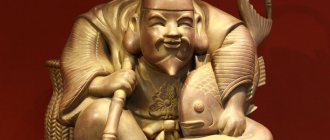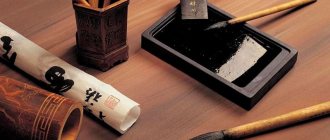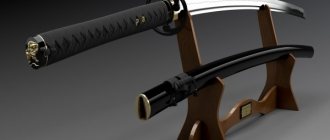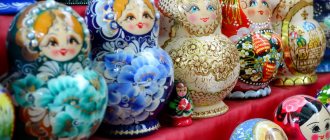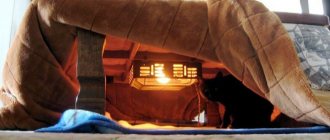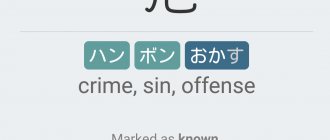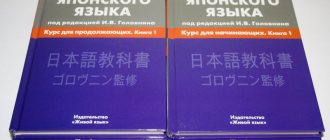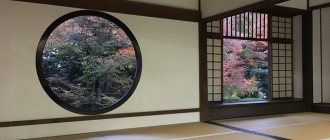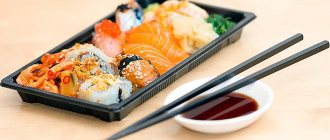.
In Japanese mythology, there are categories of monsters that share common skills and roles in folk tales. Demons They are a mythological class that includes the fierce and powerful servants of Hell. Some of these creatures are servants of the gods, others are characterized as evil spirits and spirits of nature. All creatures are united by a malicious disposition and uncontrollable anger.
General characteristics of entities
In modern Japanese culture, demons of the Oni class have a clear characteristic, but in ancient times this was the name for all supernatural beings. In some legends, Oni meant male monsters, while demonesses had a different name - Kijo. According to newer sources, these creatures are servants of the god Emma, the great judge of Hell.
Fierce monsters deliver sinners to the Underworld and brutally punish them. Legends indicate that people who do not control anger and rage during life turn into Oni after death.
There is also a myth that a person who lives an extremely vicious life can turn into a monster during his lifetime. This Oni poses a great danger to people, because it is not controlled by the gods.
Appearance
In appearance they are monsters. They look like huge men whose skin color is different from normal. They have horns and protruding fangs. The creatures are dressed in one loincloth made from the skin of a predator.
The creatures' weapon is an iron club with spikes. The Japanese Yakuzo mafia often uses bats with nails driven into wood in fights, imitating demon weapons.
In some legends, the servants of Hell appear in a more feminine form. They wear long hair, paint their lips and apply eyeliner. They are also depicted with thin smoking pipes, fans and women's umbrellas.
This indicates a blurring of the boundaries between female and male in the demon's body. According to myths, this leads creatures to higher wisdom.
Magic abilities
The magical arsenal of Oni depends on the specific creature. However, some skills are common to the entire species.
- Change of appearance. All creatures are werewolves and can take the form of both animals and people.
- Immense strength and endurance.
- The ability to manipulate human feelings and emotions.
Character and attitude towards a person
Monsters They represent anger and rage. More often they are represented as indestructible warriors, whose emotions take precedence over reason.
Despite this, monsters also have good intelligence, but in the heat of battle the creatures forget about it, relying only on strength. The attitude towards a person depends on the type of demon. Some creatures pose a threat to people, others serve the gods and bring justice to the earthly world.
In many legends, these creatures are cannibals. Only the gods are holding them back from the complete extermination of humanity.
Kasa-obake
Kasa-obake looks like a one-eyed old umbrella. The distinctive features of this creature are a large tongue and one leg. This mythical ghost is often found in various video games, films and comics.
Typically, the kasa-obake is harmless, good-natured, and rather naughty. These umbrellas love to bounce on one leg, fool around and make fun of people.
Types of demons Oni
It is impossible to determine exactly which of the Japanese monsters fits the description of the “oni demon.” Today there are several classifications.
Noh theater masks
Japanese traditional theater uses Oni demon masks during plays. They are also worn during festivals. Conventionally, the monsters of the Noh theater can be divided into two categories - daikijins (god-like demons) and ordinary spirits.
Bonten
The female demoness Bonten belongs to the daikijin. This goddess came to Japan from Indian mythology and corresponds to Saraswati. Bonten has the following features:
- Two-facedness - before respectable people, the goddess appears in the form of a beautiful girl, but to evil people she appears as an eight-armed woman entwined with a snake.
- In his peaceful form, Bonten is accompanied by a lute, since this deity patronizes music.
- Benten is the only female among the 7 Gods of Happiness.
The goddess takes on the appearance of Oni when she punishes sinners. The mask for an evil appearance is called Hannya. She looks like a white-faced woman with lined eyes and sharp horns. The image of this mask is often used for tattoos by members of the yakuzo.
Ryuuou
The name literally translates as “Lord of Dragons.” Ryuuou has the following features:
- The creature looks like a Nag - the head and torso of the creature belong to a person, and in place of the legs there is a snake tail.
- According to legends, this monster lives in water or underground.
- The Lord of the Dragons symbolizes the forces of nature, the wisdom of the earthly passage of time.
The mask of this creature is traditionally decorated with horsehair and yellow horns. The color of the creature is gold. Fangs protrude from the monster's mouth. Such masks are classified as Shinja (Dancing Snake).
Yasha
God-like demon, patron of the forest, mountain gorges and springs. Characteristics of Yasha:
- Duality - the creature appears to good people in the guise of a handsome young man and helps with advice. Before the evil ones, Yasha appears in the guise of a terrible demon.
- Cannibalism and vampirism - in an evil form, the monster eats wicked victims.
- Serving the Gods. Yasha often carries out the will of the Japanese pantheon, punishing sinners and encouraging the righteous.
The name comes from the Indian god Yaksha. The Shinja mask of the creature is decorated with black horns and protruding long upper fangs.
In later variations, the appearance of the monster approached that of a dog - a flat nose and a wide mouth with short fangs. The color of the mask is blue.
Kendatsuba
In India, some daikijini are called Gandharvas. All creatures of this class are male and serve the main deities. During service, they often act as antagonists, tempting people with vices. Meeting these monsters is a test of faith.
Outwardly, their appearance is changeable, but more often the creatures appear in the guise of half-beasts. The Gandharva Lord Kendatsuba has the following features:
- Externally, the creature looks like a man naked to the waist. Skin color is red.
- His right hand is often depicted as a lute or the wheel of dharma.
- Kendatsuba is considered the protector of children in Japanese mythology.
Gandharvas are also called "musicians of heaven." According to legend, these creatures are spirits of the wind and forest.
Asura
Ashura demons traditionally represent anger, pain and madness. Having fallen into pride, these spirits wanted to overthrow the gods, for which they were exiled to Hell.
Despite their eternal rage, Ashura is also favored by strategic wisdom and military might. Their lord Asura no has the following traits:
- Three faces. One face of the demon represents pain, the second represents pride, and the third represents anger.
- Six-armed. In the upper two hands the creature holds pearls of wisdom, in the lower pair - arrows and a fiery whip, and the middle palms are folded in a prayer gesture.
- Asura's skin color is red.
Mahoraka
These demons are related to weresnake snakes. Nagas are the patrons of science, the wisdom of research and medicine. The leader of the Mahorakas, Magoraka has the following characteristics:
- The monster's skin color is yellow.
- A biwa, a stringed instrument, is often depicted in the hands of a demon.
- The creature itself looks like a shirtless man.
Karura
In Buddhism, this Oni is a mount for the god Vishnu. According to legends, Karura is the enemy of the Asuras and Magoraks, the protector of all the righteous.
This creature shows the path of faith, where doubt and science must be cast aside. The creature incinerates all unbelievers and skeptics with a terrible flame.
Outwardly, the monster looks like Garuda - half-man, half-bird. The demon is often depicted in expensive clothes and playing a flute.
Kinnara
These creatures look like birds and predators with human faces. Kinnara Demons are the lower servants of the Gods of Japan. The leader of these creatures, Kimnara, has the following characteristics:
- The Oni demon's skin color is green.
- Kimnar's clothes are embroidered with gold and silver.
- The creature holds a drum in its hands, which it beats loudly, warning people of its approach.
Momiji-Oni
The name of this creature literally translates as “Demon of Maple Leaves.” According to Japanese mythology, Momiji is the patron of forests and the changing of seasons.
In legends, this creature dyes sakura petals and maple leaves scarlet with human blood. Momiji is also believed to be a cannibal and a cruel executioner.
This Oni demon's mask is red. She is decorated with horsehair and golden fangs protruding strongly from her mouth.
Ondeko-man
The creature's name is translated from Japanese as “demon beating the drum.” On the musical instruments and festive attire of the creature, 3 commas are depicted, which symbolize the earth, sky and humanity. Ondeko patronizes the harmony of man with nature, the balance of Yin and Yang in the world.
According to legends, this Oni demon moves through the world, dancing and beating drums. Such a ritual contributes to a good harvest and increased wealth.
The creation mask is traditionally black, with red stripes. It is also decorated with white horsehair.
Kido-man
A demon who patronizes anger. Outwardly he looks like a bearded middle-aged man. His mask does not have obvious demonic signs - there are no horns or fangs on the creature’s face.
Rekuki-men
The Oni demon preserving the dishes. The external one has green skin color and protruding fangs. A characteristic feature of the mask is the compressed mouth.
There is a Japanese tradition of eating food from a plate in the shape of Rekuki-men's face. The outside of the dish looks like an ugly demon, but the inside is light, with a smiling face at the bottom.
Some Japanese eat from such plates all year, and on February 3, the holiday of cleansing the country of demons, they break the plates. According to legend, such a ritual brings happiness and wealth to the home.
Shuten-douji
A demon whose parents are considered to be the Lord of the Wind, Susanoo, and the peasant’s daughter, Kushinadu, who he saved. The god of the wind built an estate for his son near the entrance to the land of the dead.
Shuten-douji patronizes alcoholic drinks, particularly sake. Some legends claim that this Oni demon is a descendant of Yamata Orochi, from whom Susanoo saved Kushinada.
Shuten-douji has a beautiful appearance, thanks to which he can attract any girl. For this reason, Japanese women try not to talk to strangers, because they are afraid of falling under the influence of a demon. The hair of this creature is bright scarlet, its skin is bronze in color.
Ao-Oni and Aka-Oni
This pair of demons are twins. The only difference between them is their color - Ao is traditionally depicted as blue, while Aka has a red skin tone.
The Oni Brothers are not known for their evil disposition - in Japanese mythology, these creatures play the role of jesters and bullies. They are often portrayed as weak-willed and childish.
In some myths, Ao and Aka try to make friends with children, but are driven away by people because of their ugly appearance. Demons take revenge for this with pranks - they hide clothes and kill domestic animals.
Kuro-Oni
A creature with black skin and small horns. Kuro-Oni carries with him a small hammer, which, according to legend, knocks stupidity out of a person's head.
In other sources, the demon is indicated as the Master of Battles. He is depicted in samurai garb. Weapons include a sword and a long lasso. With this rope the demon drags sinners to Hell.
After a successful battle, Kuro-Oni dances the Death Dance of Battle. Sometimes Shakki-Oni, a blood demon, joins him.
Demons Oni in Japanese folk beliefs
Some monsters and spirits also have the prefix “-They” in their names. Their image is not used in Japanese theater, but there are many legends involving these creatures.
Usi-Oni
These creatures live on the shores of the ocean and seas. Externally, demons resemble spiders with a bull's head.
Usi-They hunt people, eating their meat. Most live along the coast and attack lonely travelers, but in some legends these demons devastated entire settlements.
They often hunt in pairs with the coast witch Iso-onna and the snake woman Nure-onna. The creatures are capable of poisoning water with poisonous breath.
Amanojaku
A small demon, an analogue of the European demon or Slavic devil. This folklore character often plays the role of antagonist in Japanese fairy tales.
Amanojaku kidnaps the girls, forcing their suitors to overcome many difficulties during the search. This creature also tests people's moral integrity by offering gold in exchange for vicious behavior.
To defeat Amanojaku, you just need to be smart. When the demon's deception is revealed, the creature flees from the man in fear.
Oni-hitokuchi
Japanese demon with a huge mouth. Its head is disproportionately large and, according to legend, it is capable of swallowing people whole.
In Japanese culture, the mouth of this creature is identified with the gates of Hell. Oni-hitokuchi is rarely mentioned in the sources. His coming is a severe punishment from the gods.
Sazae-oni
A snail demon that takes the form of beautiful women and lures sailors into traps. This creature feeds on human blood, drying its victims to an empty husk.
According to legend, these monsters are dissolute girls drowned in the sea. The creatures mainly hunt men.
Nogitsune-Oni
This demon is a subspecies of kitsune, a werefox. According to legend, such a creature becomes a spirit obsessed with revenge.
The Nogitsune rarely causes serious harm to people who have not insulted her. In mythology, this creature plays the role of a trickster, a jester. However, a werewolf can cause serious damage to offenders, including killing an entire family or even a village.
Mentions in Japanese legends
Monsters They are popular characters in Japanese myths. The creatures often act as antagonists, but in theatrical productions they represent the highest justice, dragging sinners to Hell.
The Legend of Issuna Bossia
Issun Bosshi is a mythological Japanese hero of tiny size. According to legend, the faithful couple had no children, and the gods sent a small child helper.
When Issun turned 15, he decided to try his luck in the world. The little man sat down in a rice bowl and swam east from his home. Having reached the large city of Kyoto, the boy got a job as a servant in the house of a wealthy official.
The owner of the estate was pleased with the good work of the little servant. One day, the official’s daughter was attacked by two fanged Oni demons, wanting to eat the girl. One of the monsters was able to swallow the tiny servant, but Issun was not afraid and began to prick the walls of the demon’s stomach with the tip of the needle. Unable to withstand the pain, the creature spat out the hero.
Issun began to stab the demons in the eyes, and they fled in fear, forgetting their weapons at the battlefield. The boy hit the ground with a magic club, and it turned him into a beautiful man. According to legend, Issun and the official's daughter soon got married.
The Legend of Jankun
The military leader Jaikun (Soki) occupies a significant place in Japanese mythology. His name literally translates to “peach club.”
According to legend, Jaikun served as a bodyguard for the Chinese ruler Huan-Song. He failed to protect his emperor from attack, which is why he cut his own throat with his own sword.
After death, the man was reborn into a demon, but retained his noble character. Having received magical abilities, the former bodyguard decided to oppose the rest of the monsters.
In Japan, this spirit protects people from Oni demons. Jaikun wears a Chinese kimono and fights with a Chinese short sword. According to some legends, the former warrior also protects people from infectious diseases such as smallpox and malaria.
Myths about Namahage
These characters from Japanese folklore are associated with the celebration of the Eastern New Year. There are two legends that tell about the origin and abilities of these creatures.
The myth of the peasants
According to this story, Namahage was brought to Japan by Chinese Emperor Wu Han. Monsters They were part of his retinue. However, the creatures liked the mountain forests so much that Namahage decided to stay in the Land of the Rising Sun.
After some time, the demons fell in love with the peasant daughters and began to demand that the local population give them the girls. However, the villagers decided to deceive the guests of the island. The peasants offered the monsters a deal - if they could knock out a ladder in the mountain before the first rooster crows, then the most beautiful girl in the village would be given to the demons every year. If the monsters do not finish the construction on time, they will leave the village alone.
The creatures agreed to the deal. When the demons laid the last stone, the villagers got scared and imitated the crow of a rooster. The monsters got angry and left with nothing. As an apology for their deception, the peasants built a temple on the mountain, and every year they held a festival in honor of the Oni demons.
The Legend of the Sailors
According to the second legend, the Nemahage came from the water, and if you please them with food and drink, the demons will bring happiness to the house. This myth arose due to the large number of shipwrecks off the coast of Japan. People after the disaster were mistaken for demons for the following reasons:
- More often, Russian sailors, who were much larger than Japanese men, became victims of shipwrecks.
- The foreign language was harsh to Japanese ears and was associated with demonic speech.
- The victims looked unkempt, which made them look like overgrown monsters.
The name “Nama-hage” itself comes from the word “to clean” or “to burn.” According to legend, these demons come on New Year's Eve to cut the skin off people's heels. The word "namane" means the condition of the skin after being near the fire for a long time. This is the name given to idle people in Japan whose main occupation throughout the year was sitting by the stove. They will be punished by the Oni demons.
However, hospitable and hardworking owners should not be afraid of monsters - after a well-fed meal, Namahage brings happiness to the house and guarantees the residents a successful year. If you give the creatures alcohol, then, having warmed up, they can give practical advice.
According to legends, young people who want to get married must treat these demons so that they ask the couple's parents for permission to get married. The newlyweds themselves do not have the right to get married, but the older generation listened to the mythical monsters.
The demons also took care of the health of their hospitable hosts. In the houses that Namahage visited, children grew up strong and strong.
Rokurokubi
During the day, these monsters look like ordinary people, but at night they stretch their necks very much, which looks absolutely terrifying.
Rokurokubi are very aggressive: they cruelly play pranks on passers-by, scare them to death, and in some cases even kill themselves.
Previously, these creatures were ordinary people, but they changed due to violations of any religious commandments or terrible crimes.
Setsubun Festival
A traditional Japanese holiday associated with the change of seasons. The festival takes place on February 3. An important ritual is the rite called “Mame-maki” - the expulsion of Oni demons. The ritual includes the following actions:
- The eldest member of the family puts on the mask of the Oni demon and begins to scare the rest of the relatives. Sometimes famous personalities or sumo wrestlers are invited to play the role of the monster.
- Children and wife throw fried beans at the man.
- After removing the mask, the head of the family also scatters beans around the house.
According to legend, demons cannot stand the smell of soybeans and flee back to Hell in fear. Also on this day, mass processions are held in Noh theater masks. The steps of the temples are sprinkled with roasted soybeans and beans, and each person must eat as many bean grains as his age.
